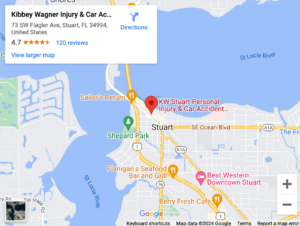
Nerve injuries can cause permanent loss of sensation and paralysis. Unfortunately, these symptoms do not simply go away. Many forms of nerve damage will remain with you for the rest of your life.
The symptoms of nerve damage can disable you from working. Equally importantly, they can significantly erode your quality of life as you experience pain, weakness, and other symptoms that impact your ability to participate in activities you enjoy.
The Structure and Function of Your Nervous System

Your nervous system controls everything in your body, from the sensory signals in your skin to the motor impulses in your muscles. Your brain uses the sensory signals to form a picture of your environment. That picture tells your brain how to control your muscles and organs.
Some of these control signals occur without conscious thought. Others happen in response to a deliberate decision. For example, when your skin senses a cold wind, your brain contracts the blood vessels to your arms and legs and triggers your hand to zip your coat.
The nervous system includes two parts. The central nervous system (CNS) includes your brain and spinal cord. It creates all impulses and carries them to your body.
The peripheral nervous system (PNS) carries signals from the CNS to their destinations. The PNS includes the following structures:
Cranial Nerves
Cranial nerves connect your head and face to your brain. They innervate your facial muscles, enabling you to form facial expressions. They move your eyes, tongue, and jaw. They also carry sensory information from your eyes, nose, ears, and tongue to your brain.
Finally, cranial nerves serve two vital functions. One pair of cranial nerves controls your ability to swallow and clear your throat. Another pair of cranial nerves control your heart rate and digestion.
Nerve Roots
Your spinal cord includes 31 pairs of spinal nerves. At each vertebra, a pair of nerve roots branches from the spinal nerves. These nerve roots carry all the signals for the body region innervated by the corresponding spinal nerve.
Peripheral Nerves
Nerve roots branch into peripheral nerves. These nerves run to the muscles, organs, and skin. They carry motor and autonomic signals to their destinations. They also generate sensory signals for the brain.
What Can Cause Nerve Damage?
Nerve damage can occur to any component of the CNS or PNS since they all include nerve cells called neurons. However, doctors typically refer to nerve damage to the CNS as brain injuries and spinal cord injuries. This discussion will focus on nerve damage to the PNS.
Nerves suffer damage in three primary ways:
Laceration
Nerves use a combination of electrical and chemical signals to transmit messages. The chemical signal comes from neurotransmitters that flow from one nerve cell to another. The electrical signal gets generated by charged ions that cause nerve cells to fire in a predictable pattern.
Lacerated nerves have a gap that the electrical and chemical signals cannot jump. As a result, the damaged nerve cannot carry sensory signals to the brain or control signals to the body. A laceration can happen in almost any type of accident involving sharp objects. Thus, you could lacerate a nerve in a workplace accident in which a defective machine slices into your arm.
Lacerated nerves do not heal. In some cases, doctors can treat a lacerated nerve with a nerve graft.
Traction
Traction happens when nerves get pulled. The nerves stretch, damaging the nerve cells. Some signals might get lost traveling along the damaged nerve. Other signals might lose strength as the damaged nerve carries them.
These nerve injuries often happen when you experience the powerful forces generated by traffic crashes. For example, the impact of a car on your leg during a motorcycle accident could damage the nerves.
Traction can also result from much weaker forces. One of the most common birth injuries, Erb’s palsy, happens when a doctor pulls too hard on a baby’s arm and shoulder during delivery. The force stretches the brachial plexus nerve bundle, paralyzing or weakening the baby’s arm.
Sometimes, physical therapy can help you recover some of the lost functions. Doctors can also operate to remove the damaged portion of the nerve and replace it with a nerve graft.
Compression
Compression happens when another structure presses on a nerve. Pressure irritates the nerve and causes inflammation. The inflamed nerve misfires, producing errant signals.
A common form of nerve compression results from herniated or bulging discs. When discs deform, they can press on nerve roots. The inflamed nerve root causes pain that radiates into the areas of the body innervated by it. Thus, a compressed nerve root in your lower back might cause pain in your leg even though you didn’t suffer a leg injury.
Unlike nerves that have suffered traction or a laceration, doctors have options to treat nerve compression. They can relieve nerve compression by removing or moving what’s pressing on it. They can also treat the nerve with drugs to tame the inflammation.
What Are the Potential Symptoms of Nerve Damage?
Your nerves carry three types of signals. The symptoms you suffer will depend on the signals your injury disrupted. The three types of signals and their associated symptoms include the following:
Sensory Signals
Sensory signals carry sense perceptions to the brain.
Symptoms that can result from a disruption of these signals include:
- Pain
- Numbness
- Tingling
- Buzzing sensations
- Loss of vision or hearing
- Balance issues
- Loss of sensitivity to hot or cold
Sensory signals also give your brain information about the condition of your body. Nerve damage might prevent you from knowing when you need to empty your bladder.
Motor Signals
Your brain uses motor signals to move your body. This includes your reflexes as well as intentional motions.
Some symptoms that occur when an injury disrupts motor signals include:
- Paralysis
- Weakness
- Muscle spasms
- Loss of coordination and fine motor control
Disruptions in the motor signals could cause mobility or dexterity issues. As a result, your nerve damage could affect your ability to work or perform household tasks.
Autonomic Signals
Many of the brain’s signals get sent without any conscious thought. These signals regulate your body’s systems automatically.
Some functions that might not operate correctly after suffering nerve damage include:
- Heart rate
- Blood pressure
- Respiration
- Perspiration
- Digestion
- Bladder and bowel control
These symptoms can disrupt your daily life. Worse yet, they degrade your quality of life by limiting your comfort and abilities.
Can I Get Compensated For Nerve Damage?
You can pursue personal injury compensation when someone else’s intentional or negligent actions damage your nerves. To prove liability for your injuries, you must show that the other person either intended to cause harmful contact with you or failed to exercise reasonable care in causing the incident that injured you.
In either case, you can seek compensation for your financial losses and the pain and suffering you endured. Contact our attorneys at Kibbey Wagner Injury & Car Accident Lawyers Stuart to discuss how your injuries happened and the compensation you may seek for them under Florida law. You can call us at (772) 444-7000.

